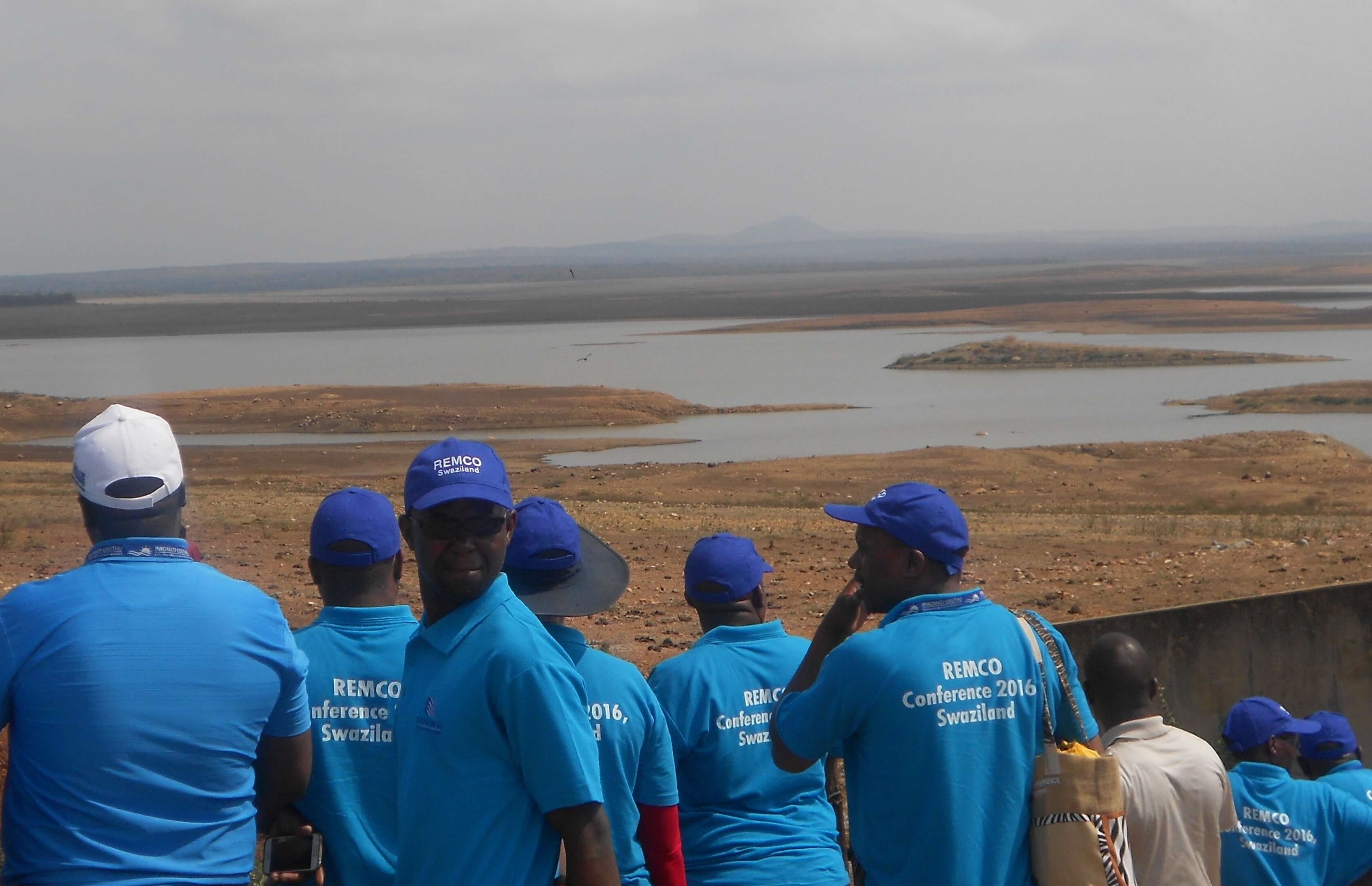
‘A climate resilient transboundary catchment’ was the theme of the 4th River and Environmental Management Cooperation (REMCO) conference, held in Swaziland from 25-28 September 2016.
The Kingdom of Swaziland is experiencing a severe drought which has resulted in water sources drying up. Water engineers from Swaziland’s Department of Water Affairs (DWA) explained that the country is grappling with low dam levels. For example, the Hawane Dam, on the Mbuluzi Transboundary River, is currently at 1% capacity despite being the water source for the city of Mbabane and Ngwenya town. Further down the Mbuluzi River is the Mnjoli Dam, the third largest in Swaziland, and currently standing at 6% capacity. Water rationing has become a reality – in Mbabane, the capital city, it is rationed for four days per week, with priority given to domestic water over industrial use. The Mnjoli Dam is the source of most of the sugarcane irrigation of Swaziland, and also provides a 40% inflow release to Maputo in Mozambique.
The delegates from the riparian states (South Africa, Swaziland and Mozambique) highlighted the devastating consequences of drought in their countries. In South Africa, the wildlife sector has been greatly affected – a large number of animals in Kruger National Park have been sold off due to poor vegetation and water scarcity. In Mozambique, the fisheries industry was also severely affected because of low volumes of fish in 2016.
During the conference, the delegates embarked on a field trip to witness several water security projects. Swaziland currently has two main projects to improve the water security of communities in the context of low dam levels in the country. One of the projects being implemented is waste water recycling, in which the sewage water is treated before it is allowed back into the stream. The Swaziland Water Service Co-operation (SWSC) is in charge of this plant which is located in Ezulwini and receives waste from Mbabane city and Ezulwini town. The main function of the treatment plant is to ensure that the waste water is safe for reuse.
The treated water is allowed to flow for about 20km in the Usuthu River to gain its natural state and is then pumped back again to be treated for domestic and industrial use. This is a way of supplementing low dam levels in the country. The delegates appreciated the practical interventions to improve water security in the drought stricken parts of Swaziland.

Sand dam projects have also been developed as climate change adaptation initiatives. In the Sidvokodvo community in Swaziland, the sand dam project was implemented by the Ministry of Natural Resources (MNRE) through the DWA. The bottom-up approach was used effectively in this project as the community was involved from the start – from identification of the project site, through the construction, and the benefit sharing from the water reserves. The bottom-up approach ensured community ownership of the project. The area depends on an ephemeral stream which has been greatly affected by the drought and the project was to alleviate the water challenges faced by the community. The sand dam would be a means for the community to harvest water during the rainy season.
It is important to ask the question: why are sand dams so important in the rural African context? Firstly, besides drought and low dam levels, rural women are perceived to bear the brunt of domestic water insecurity. This culminates in women walking long distances (10km or more) to fetch water in 20litre buckets. Secondly, they are the guardians of domestic water by ensuring that water is available for the household in good quality and quantity, regardless of the effort put in to make this possible. In this harsh socio-economic context, the sand dams are definitely a noble intervention to improve the welfare of African women and water security for the rural communities of Swaziland.
However, without discrediting the potential short-to-long-term benefits of the intervention measures (waste water recycling and sand dams), scientific methods to assess the quality of water harvested from the sand dams need to be applied. Currently, no further water purification processes beyond the natural sand filters is done, hence the view that the designers of the dams assumed that good quality water will be harvested from the system. The water quality can be improved by the government introducing simple – and user friendly – water testing and treatment. Though the sand dam had not fully matured, the dams were already benefiting the community through provision of water for livestock watering and in the community gardens.
In conclusion, Swaziland’s Minister of Natural Resources and Energy challenged the delegates to find solutions to common problems that exist within the different basins, and to improve inter-basin institutional linkages. The need to acknowledge the importance of local level collaboration, innovation and participation is essential to improve water security under drought conditions.
Elsah Dhliwayo and Tinashe Rimau are studying for an MSc in Integrated Water Management at Monash South Africa, funded by an IWSN scholarship.
